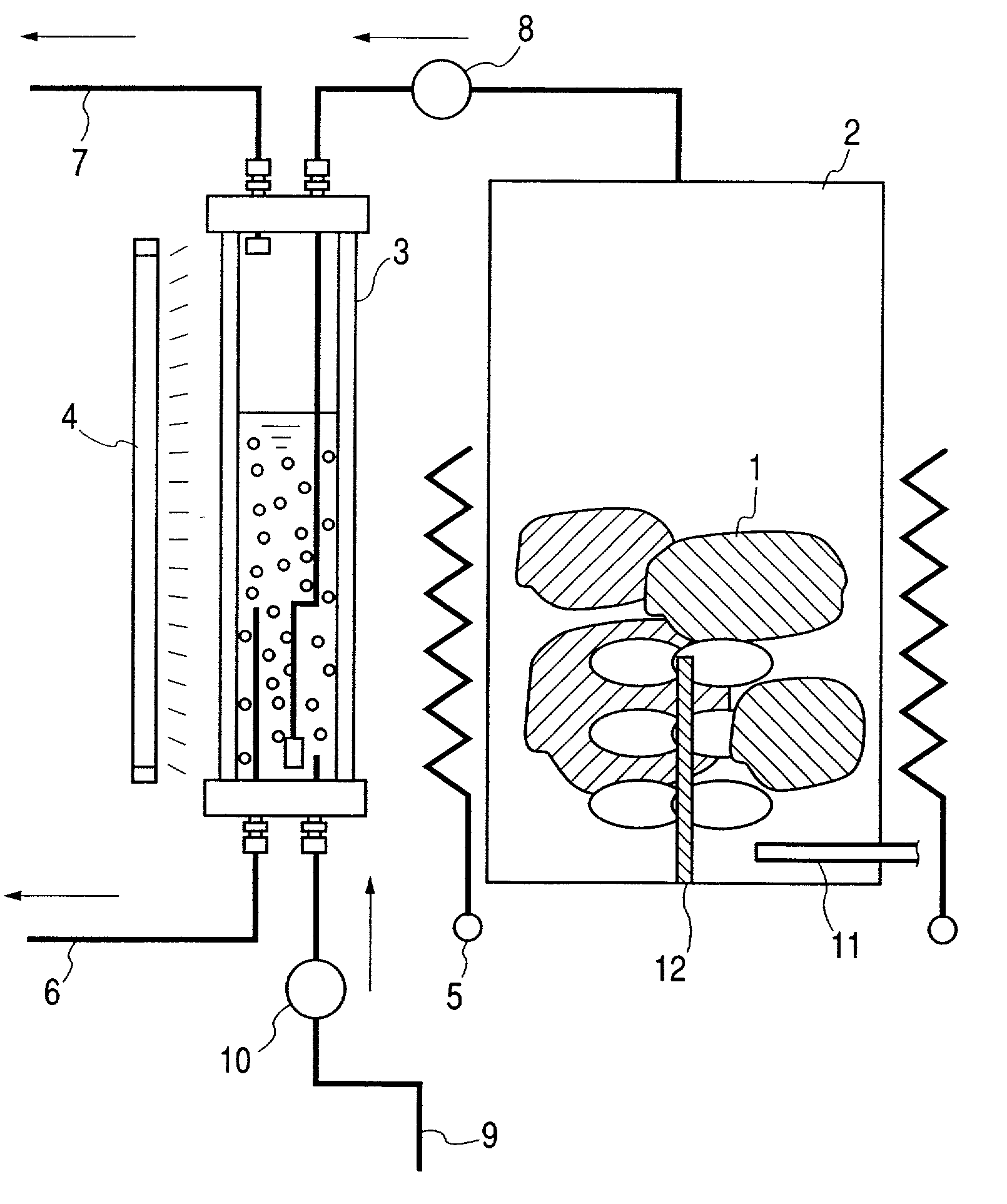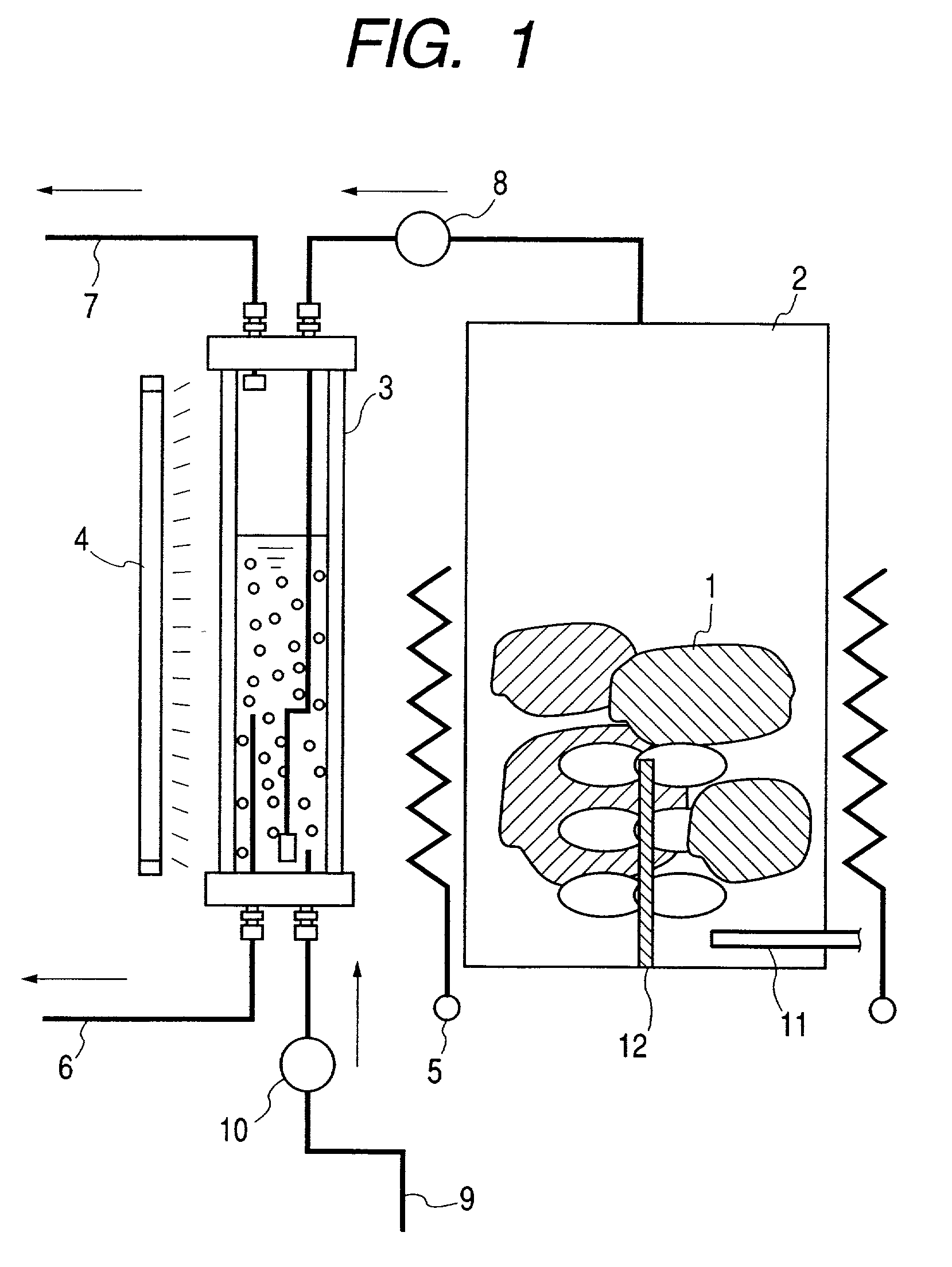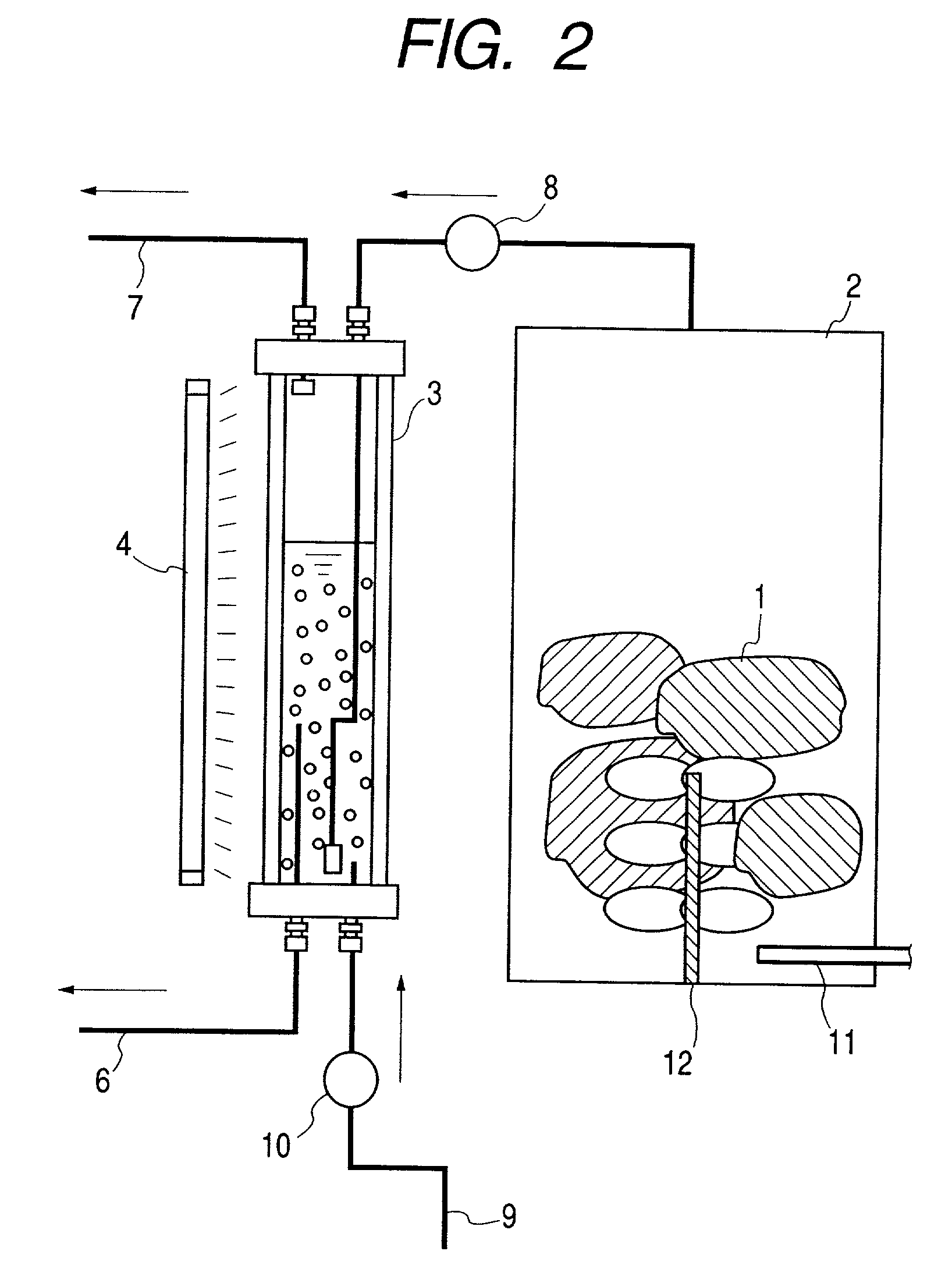Method and apparatus for purifying polluted soil, and apparatus for emitting chlorine-containing gas and apparatus for decomposing polluted gas using the same
a technology of polluted soil and apparatus, which is applied in the direction of chemistry apparatus and processes, separation processes, dispersed particle separation, etc., can solve the problems of serious environmental problems, serious disposal of such compounds, and the introduction of organic compounds into the environmen
- Summary
- Abstract
- Description
- Claims
- Application Information
AI Technical Summary
Benefits of technology
Problems solved by technology
Method used
Image
Examples
example 2
[0187] Example 2
[0188] Polluted soil was purified by the apparatus for purifying the polluted soil, shown in FIG. 2, where each member of the apparatus is marked with the same number as the corresponding one in FIG. 1, when they have the same function.
[0189] The polluted soil 1, polluted with organic chlorine compounds and the like, was charged into the heating tank 2 of stainless steel.
[0190] The pollutants and their contents are given below:
[0191] Trichloroethylene: 11.3 mg / kg
[0192] Tetrachloroethylene: 8.1 mg / kg
[0193] Dichloromethane: 2.3 mg / kg
[0194] 1, 1, 1-trichloroethane: 8.3 mg / kg
[0195] An inorganic compound exothermically reacting with water was used as the heating means. More concretely, a given quantity of quick lime (purity: 90% or more as CaO), crushed into particles of 5 mm as average size, was well mixed with the polluted soil 1 by the stirring means 12.
[0196] The heat generated by the exothermic reaction in the polluted soil 1 evaporated the pollutants. The exothermic...
example 3
[0198] Example 3
[0199] Polluted excavation soil 21, containing 10.3 mg / kg of trichloroethylene and 18.0 wt. % of water, was transferred into the vinyl house 22, shown in FIG. 3. Temperature of the polluted soil was 11.degree. C. Quick lime (CaO content: 90% or more) was evenly sprayed onto the polluted soil surface to 4 wt. %, based on the whole polluted soil, and stirred by a scoop for mixing. The mixture was immediately compressed by a roller, and temperature rise was monitored. Stirring by a scoop was started when temperature reached to the attainable peak. Temperature of the mixture changed in a range between 25 to 33.degree. C., when it was stirred a couple of times. Concentration of trichloroethylene was decreased to 0.9 mg / kg in 10 hours. The mixture was again stirred in a similar manner for additional 10 hours. Its temperature changed in a range between 22 to 29.degree. C., and concentration of trichloroethylene was further decreased to 0.01 mg / kg or less. At this stage, the...
example 4
[0202] Example 4
[0203] The test was conducted in the same manner as in Example 2, except that the functional water prepared by electrolysis was replaced by service water incorporated with 0.006 mol / l of hydrochloric acid and 0.002 mol / l of sodium hypochlorite to have a pH level of 2.3, redox potential of 1,180 mV and chlorine concentration of 105 mg / l. The concentrations of all the pollutant, discharged via the discharge pipe 7, were below the detectable limit, and the treated soil was found to contain the pollutants all at 0.01 mg / kg or less. It is thus confirmed that the polluted soil was purified and the pollutants emitted were decomposed.
PUM
 Login to View More
Login to View More Abstract
Description
Claims
Application Information
 Login to View More
Login to View More - R&D
- Intellectual Property
- Life Sciences
- Materials
- Tech Scout
- Unparalleled Data Quality
- Higher Quality Content
- 60% Fewer Hallucinations
Browse by: Latest US Patents, China's latest patents, Technical Efficacy Thesaurus, Application Domain, Technology Topic, Popular Technical Reports.
© 2025 PatSnap. All rights reserved.Legal|Privacy policy|Modern Slavery Act Transparency Statement|Sitemap|About US| Contact US: help@patsnap.com



